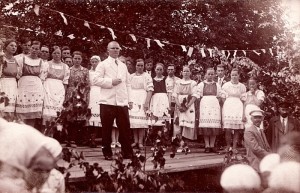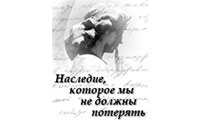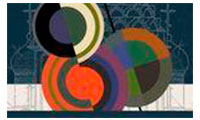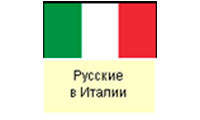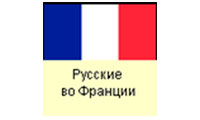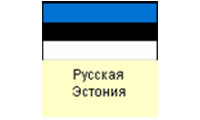The Old Believers of Riga
Arnold Podmazov
Riga Old Believers in the Independent Latvia (1918–1940)
As a result of Latvian independence, the legal status of Old Believers in Latvia became more secure. The Old Believers were recognized as one of Latvia’s traditional religious denominations and granted full civil rights. Until adoption of the Law “On the Old Believers’ Communities” in 1935 which was drafted with active participation from influential Old Believers such as I. Yupatov, V. Kudryachev, I. Zavoloko. the Old Believers’ life was still regulated by the Statutes of 1906. In the 1920s and 1930s alongside other traditional confessions of Latvia, the Old Believers’ communities received state subsidies. For the Old Believers of Latvia it was the first experience of benefiting from a favorable attitude towards them from state authorities, which in turn evoked in Old Believers a sense of loyalty to the Latvian state.
Mutual assistance and charity continued to play an important role in the Old Believers’ milieu. In the 1920s the Riga Grebenshchikov Community participated in the distribution of humanitarian aid from the International Red Cross and other charitable organizations. Old Believers’ community took part in helping the people in need, first of all children and elderly, regardless of their religious affiliation. The oldest Russian organization in Riga, the Riga Grebenshchikov almshouse and shelter, continued its work. The number of helpless and elderly who lived there was constantly changing, but on average it reached approximately 200 people.
The Society for Educating the Children in Need, which took care of a homeless shelter for children, also never interrupted its work. A kindergarten for the Old Believers’ children was also opened in the 1930s.
The charitable work of the Grebenshchikov Community was made possible due to the donations and selfless dedication of some of the parishioners. Among the notable trustees and benefactors who worked in the interwar period one should mention Vasily Grigoryevich Kudryachev (1869–1941) who served as the Chairman of the Council of the Grebenshchikov Community (1924–1940), the trustee for the Society for Educating the Children in Need and for the Grebenshchikov almshouse. V. G. Kudryachev was a successful businessman, well known in Riga because of his work covering the Daugava embankment with granite. In 1926 Kudryachev donated a space for the needs of the children shelter of the Old Believers’ community, while in 1936–1937 he built at his own expense a house for the shelter and kindergarten, after the project of Vladimir Shervinsky (1894–1975). Following the example of their leader, many well-to-do parishioners also made their own contributions for the strengthening of the community.
During the interwar period the Old Believers’ societies and associations were also engaged in charitable work. Especially active was the Old Believers’ Society in Latvia which was reestablished in 1923. The Society had its own Trade and Industry Department where the Society members could receive legal advice without charge. In case of death of a Society member or of his close relative, the Society provided financial support. In order to teach the Old Believers professional skills for gainful employment, the Society organized classes in accounting and shorthand. The Society’s founder Feodor Pavlov served as the chairman until his death in 1933, after which he was succeeded by M. Meschenkov and P. Pankov. The Society regularly invited renowned scholars and cultural figures to deliver lectures and talks. V. Sinaisky, N. Dmitryev, D. Tihomirov, P. Yakobi et al. were among the invited speakers. The Society maintained a library containing more than four thousand volumes.
It were the 1920s that saw the formation of a milieu of Old Believers’ intelligentsia, which included the people who, as a rule, had received a good university education and did not only took active part in the life of the Old Believers’ community, but were involved in the life of Latvia’s society as well. Among such people were certainly Riga Old Believers F.S. Pavlov (1872–1933), I.F. Yupatov (1865–1941), I.N. Zavoloko (1897–1984) and Latgalian Old Believers M.A. Kallistratov (1896–1941) and S.P. Kirillov (1877–1960) et al.. In 1920s several All-Latvian Old Believers’ Congresses were convoked and attempts were made to create a central administrative body for all Old Believer communities. At this time, two such organizations were created: the Central Committee of the Old Believers in Latvia (1920–1934) and the Council of the Old Believers’ Councils and Congresses (1929–1934), where many Riga Old Believers were actively involved. The Old Believers were also involved in the country’s political scene, running on different party lists in the elections of Saeima (Parliament). G.V. Kudryachev, M.A. Kallistratov, S. P. Kirillov, and I.F. Yupatov participated in many election campaigns and, with the exception of Kudryachev, all were elected into the parliament. Additionally, in 1925–1934 I. Yupatov served as the director of the Russian School Department in the Ministry of Education of Latvia.
The period of the 1920s and 1930s could be called a time of dynamic social activity of the Old Believers in Latvia and Riga. Special care was taken to preserve the cultural heritage of the Old Believers and to educate the Old Believers’ youth in the spiritual matters. The “Group of Zealots for the Ancient Russian Traditions”, founded in 1927, was attempting to unite young Old Believers on the basis of their interest in their Russian culture and in their ancestral faith, as well as to facilitate dialogue between different generations of Old Believers in order to ensure the survival of the traditions of the past. Ivan Nikiforovich Zavoloko was the founder and the leader of this Group.
Ivan Zavoloko came from an traditional Old Believers’ family. He had received a good secular education, having graduated from Charles University in Prague with a Candidate degree in law (1927), and maintained contacts with the prominent Russian émigrés. He corresponded with V.V. Zenkovsky, Nikolay Roerich, L.A. and V. A. Zander, M.V. Shakhmatov, P.P. Muratov and with the scholars from the Kondakov Byzantine Seminar, a research institute that existed in 1925–1938. At the same time I. Zavoloko possessed vast knowledge of the Old Believers’ tradition to which he was devoted, as he was raised in it by his parents and by his spiritual father G. Frolov. Zavoloko is an author of more than 150 publications and a number of books. His name is well known in the academic circles, among historians, scholars of literature, bibliophiles, collectors and researchers of old manuscripts. In the 1960s Ivan Zavoloko discovered a unique document in the handwritten anthology called “The Teachings of Dorophey”: the original of the Life of Protopop Avvakum and Monk Epiphany, as well as of their own works. In 1968 Ivan Zavoloko handed this manuscript as a gift over to the Depository of Antiquities at the Pushkin House (Institute of Russian Literature in St. Petersburg).
The “Group of Zealots of the Ancient Russian Tradition” was active in educating Old Believers in the 1930-ies. The Group organized discussions on the themes of history, religion, and culture. Among the invited guests were Russian philosophers, historians, literary figures, and artists: S. Zavadsky, V. Sinaisky, V. Zenkovsky, S. Minclov, Y. Novoselov and others. The branches of the society were set up in Jelgava, Rezekne and Daugavpils. The Group had contacts with Old Believers in Lithuania and Estonia, it participated in the Old Believers’ song festivals and organized folklore and ethnographic expeditions to Latgale, Poland, and Romania. The Society published a historical and cultural almanac The Native Olden Times [Rodnaya Starina, 1927–1933, altogether 13 issues were published]. It contained essays by Old Believers’ authors, as well by specialists in Russian ancient history, culture, literature, and art.
Due to the enthusiasm of I.N. Zavoloko and of the members of the Group, it was possible to lay the ground for the systematic religious education among the Old Believers. In the 1930 the Grebenshchikov Community prepared a curriculum for teaching the classes in religion. This curriculum was approved by the Latvian Ministry of Education as the basis for religious instruction for the children of the Old Believers’ families in the comprehensive schools.
Special attention was paid to publication. Aside from the books for schools, such as The Law of God (1932, 1936), A History of the Church of Christ (1937) (both books were reprinted by the Grebenshchikov Community in the 1990-ies), in 1932–1933 the community published two small collections of patristic texts A Golden Stream [Zlatostruy] and in 1937, three issues of the journal Spiritual Father [Nastavnik]. The Old Believer Church calendar was issued in 1936-37 and in 1939 in Riga (editors L. Murnikov and I. Vakonya) while previously it was published in Daugavpils (1927–1931) by the spiritual father A. Ekimov.
“The Group of Zealots for the Ancient Russian Tradition” became an example for other Riga Old Believers’ organizations. In 1932 Porfiry Fedorovich Fadeyev (1904–1964), a well-known Znamenny chant specialist and the director of the Group choir, founded The Old Believer Singers’ Society in Latvia. During its first year only, this Society organized 10 spiritual concerts and 51 talks and lectures on religious and ethical themes. It has opened classes in ChurchSlavonic, attended by 43 people, and set up seven branches that also united admirers of the Znamenny chant. In 1933 the society published five issues of The Old Faith [Staraya Vera], a religious and ethical journal.
The Old Believers’ traditions of vocal music were popular even outside the Old Believers’ milieu. The choir of the “Zealots’ Group” organized open concerts of “spiritual poems”, while the Society’s tenth anniversary was celebrated with a concert at the Riga House of the Blackheads (1937). Old Believers’ choirs participated in the Russian Singing Festivals, including the one in Pechory in 1939. An instrumental orchestra, which was founded in 1920 by an Old Believer Sergey (Stefan) Mefodievich Krasnopyorov (1900–1989) and involved musicians of different confessions, earned a well-deserved fame. It had a diverse repertoire, from Russian folk to classical music. The ensemble was so popular that it was often invited to perform on radio and in the end of the 1930s Krasnopyorov’s orchestra often went on a tour abroad. After the Second World War, S.M. Krasnopyorov chaired the Department of folk instruments at the Conservatoire of Latvia and he continued to work as a conductor and composer.
After the coup of 1934 Latvian Old Believers no longer had any organizations that were in charge of administration and coordination for all the communities. No more All-Latvian Old Believers’ Congresses were held. The Riga Grebenshchikov Community thus once again became the spiritual center for the Old Believers in Latvia. The ties between Old Believers of Latvia, Lithuania, Poland and Estonia became even stronger. Well-known Old Believers from Estonia, such as P. Baranin, L. Murnikov and others, often visited Riga. The leaders of Polish Old Believers’ communities A. Pimonov, B. Pimonov, P. Kiselev, N. Morozov and others maintained close relations with the Old Believers in Latvia. So also the Old Believers from Riga were frequent guests at the communities in Lithuania, Poland and Estonia. I. Vakonya, I. Zavoloko, and others delivered lectures at courses and seminars organized in these communities. Just before World War II, there were discussions about holding of an All-Baltic Old Believers’ Council, but with the outbreak of the war the idea had to be given up.
Content
- Introduction
- Schism and “Old Belief”
- Beginnings of the Old Believers on the territory of Latvia
- Confessional Characteristics of Old Believers in Latvia
- Old Believers’ Church Building and Liturgy
- Books and Book Culture
- Iconographic Traditions of Riga Old Believers
- Pomorian Old Believer Traditions of the Art of Copper Casting
- Old Believer Churches in Riga
- Old Believer Societies in Riga
- Old Russian Residents of Riga and Old Believers in the 18th century
- The Years of Prosperity and the Years of Misery: Riga’s Old Believers in the 19th Century
- Riga Old Believers at the Turn of 19th and 20th Centuries
- Riga Old Believers in the Independent Latvia (1918–1940)
- Riga Old Believers During the Soviet Period (1940–1941, 1944–1991)
- Riga Old Believers after the Restoration of Latvia’s Independence
- Photogallery
- About the Project. The Old Believers of Riga: 250 Years of Cultural Historical Experience


